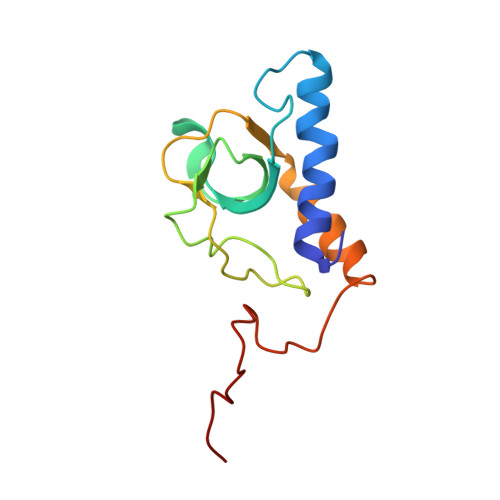The Role of Sialyl Glycan Recognition in Host Tissue Tropism of the Avian Parasite Eimeria tenella
Lai, L., Bumstead, J., Liu, Y., Garnett, J., Campanero-Rhodes, M.A., Blake, D.P., Palma, A.S., Chai, W., Ferguson, D.J., Simpson, P., Feizi, T., Tomley, F.M., Matthews, S.(2011) PLoS Pathog 7: e1002296-e1002296
- PubMed: 22022267
- DOI: https://doi.org/10.1371/journal.ppat.1002296
- Primary Citation of Related Structures:
2LBO - PubMed Abstract:
Eimeria spp. are a highly successful group of intracellular protozoan parasites that develop within intestinal epithelial cells of poultry, causing coccidiosis. As a result of resistance against anticoccidial drugs and the expense of manufacturing live vaccines, it is necessary to understand the relationship between Eimeria and its host more deeply, with a view to developing recombinant vaccines. Eimeria possesses a family of microneme lectins (MICs) that contain microneme adhesive repeat regions (MARR). We show that the major MARR protein from Eimeria tenella, EtMIC3, is deployed at the parasite-host interface during the early stages of invasion. EtMIC3 consists of seven tandem MAR1-type domains, which possess a high specificity for sialylated glycans as shown by cell-based assays and carbohydrate microarray analyses. The restricted tissue staining pattern observed for EtMIC3 in the chicken caecal epithelium indicates that EtMIC3 contributes to guiding the parasite to the site of invasion in the chicken gut. The microarray analyses also reveal a lack of recognition of glycan sequences terminating in the N-glycolyl form of sialic acid by EtMIC3. Thus the parasite is well adapted to the avian host which lacks N-glycolyl neuraminic acid. We provide new structural insight into the MAR1 family of domains and reveal the atomic resolution basis for the sialic acid-based carbohydrate recognition. Finally, a preliminary chicken immunization trial provides evidence that recombinant EtMIC3 protein and EtMIC3 DNA are effective vaccine candidates.
Organizational Affiliation:
Division of Molecular Biosciences, Imperial College London, South Kensington Campus, London, United Kingdom.














